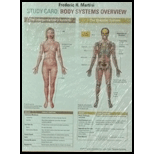
Concept explainers
Name and describe the three types of joints as classified by range of motion.
To determine:
The name and describe the three types of joints as classified by the range of motion.
Introduction:
Interaction of bones occur, wherever they meet at the articulations or joints. The joints are classified on the basis of their structure or function. Functional basis of classification comes under the range of motion.
Explanation of Solution
The functional classification of joints or the classification of joints on the basis of range of motion is divided into 3 types that are as follows:
1. Freely movable joints: These are also called as synovial joints or diarthrosis, which means “through joints”. These are present in the appendicular skeleton. These are subdivided on the basis of their plane of movement.
2. Slightly movable joints: These are also called as amphiarthrosis, which means “on both sides joint”. It is either, cartilaginous or fibrous. It depends on the type of connections between the two bones (opposing).
3. Immovable joints: These are also called as synarthrosis, which means “together joint”. These joints can be either, cartilaginous or fibrous. It depends on the type of connections between the two bones. The two bones over the time, can even fuse or ossify.
Interaction of bones occur, wherever they meet at the articulations or joints.
Want to see more full solutions like this?
Chapter 9 Solutions
Fundamentals of Anatomy and Physiology - Study Card
- Describe the characteristic structures found at all synovial joints.arrow_forwardThe movement during which the knees or elbows are bent to decrease the angle of the joints is known as _______________.arrow_forwardThe procedure that stiffens a joint by joining two bones is _______________. This is also known as surgical ankylosis.arrow_forward
- The surgical placement of an artificial joint is known as __________________.arrow_forwardWhat is a joint?arrow_forwardCondyloid joints ________. are a type of ball-and-socket joint include the radiocarpal joint are a uniaxial diarthrosis joint are found at the proximal radioulnar jointarrow_forward
- The proximal radioulnar joint ________. is supported by the annular Ligament contains an articular disc that strongly unites the bones is supported by the ulnar collateral ligament is a hinge joint that allows for flexion/extension of the forearmarrow_forwardWhich type of joint provides the greatest range of motion? ball-and-socket hinge condyloid planearrow_forwardWatch this video (http://openstaxcollege.org/l/anklejoint1) for a tutorial on the anatomy of the ankle joint. What are the three ligaments found on the lateral side of the ankle joint?arrow_forward
 Anatomy & PhysiologyBiologyISBN:9781938168130Author:Kelly A. Young, James A. Wise, Peter DeSaix, Dean H. Kruse, Brandon Poe, Eddie Johnson, Jody E. Johnson, Oksana Korol, J. Gordon Betts, Mark WomblePublisher:OpenStax College
Anatomy & PhysiologyBiologyISBN:9781938168130Author:Kelly A. Young, James A. Wise, Peter DeSaix, Dean H. Kruse, Brandon Poe, Eddie Johnson, Jody E. Johnson, Oksana Korol, J. Gordon Betts, Mark WomblePublisher:OpenStax College Biology 2eBiologyISBN:9781947172517Author:Matthew Douglas, Jung Choi, Mary Ann ClarkPublisher:OpenStax
Biology 2eBiologyISBN:9781947172517Author:Matthew Douglas, Jung Choi, Mary Ann ClarkPublisher:OpenStax Medical Terminology for Health Professions, Spira...Health & NutritionISBN:9781305634350Author:Ann Ehrlich, Carol L. Schroeder, Laura Ehrlich, Katrina A. SchroederPublisher:Cengage Learning
Medical Terminology for Health Professions, Spira...Health & NutritionISBN:9781305634350Author:Ann Ehrlich, Carol L. Schroeder, Laura Ehrlich, Katrina A. SchroederPublisher:Cengage Learning Fundamentals of Sectional Anatomy: An Imaging App...BiologyISBN:9781133960867Author:Denise L. LazoPublisher:Cengage Learning
Fundamentals of Sectional Anatomy: An Imaging App...BiologyISBN:9781133960867Author:Denise L. LazoPublisher:Cengage Learning Human Biology (MindTap Course List)BiologyISBN:9781305112100Author:Cecie Starr, Beverly McMillanPublisher:Cengage Learning
Human Biology (MindTap Course List)BiologyISBN:9781305112100Author:Cecie Starr, Beverly McMillanPublisher:Cengage Learning





